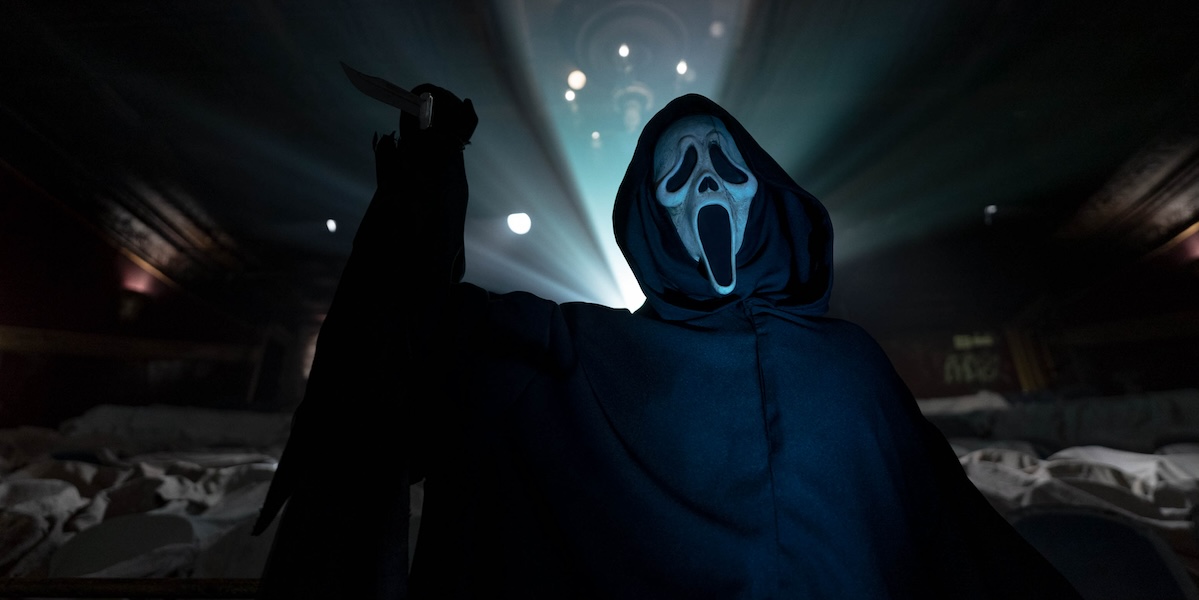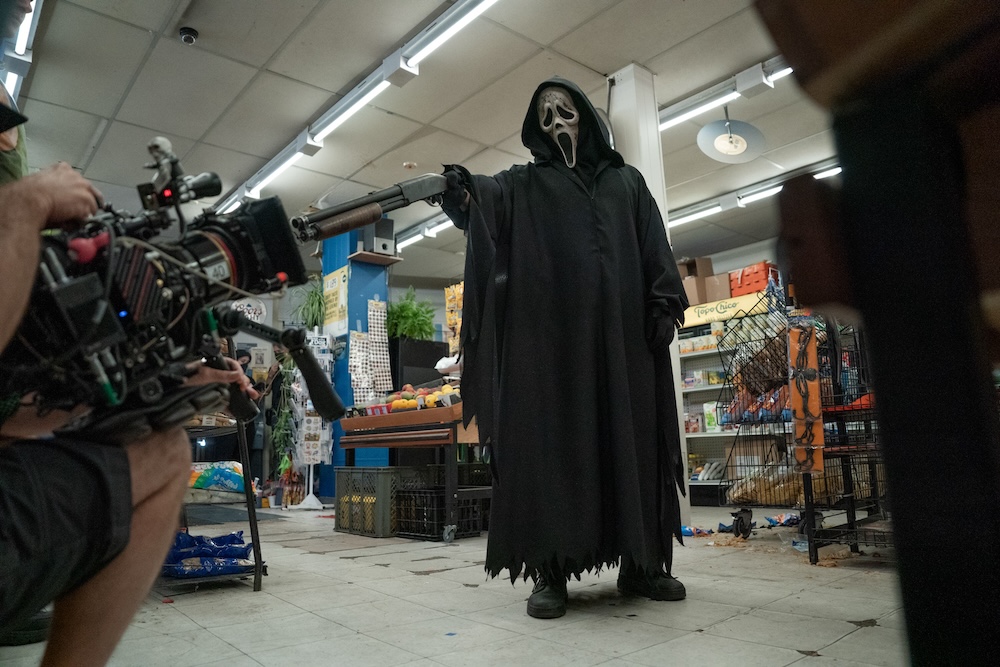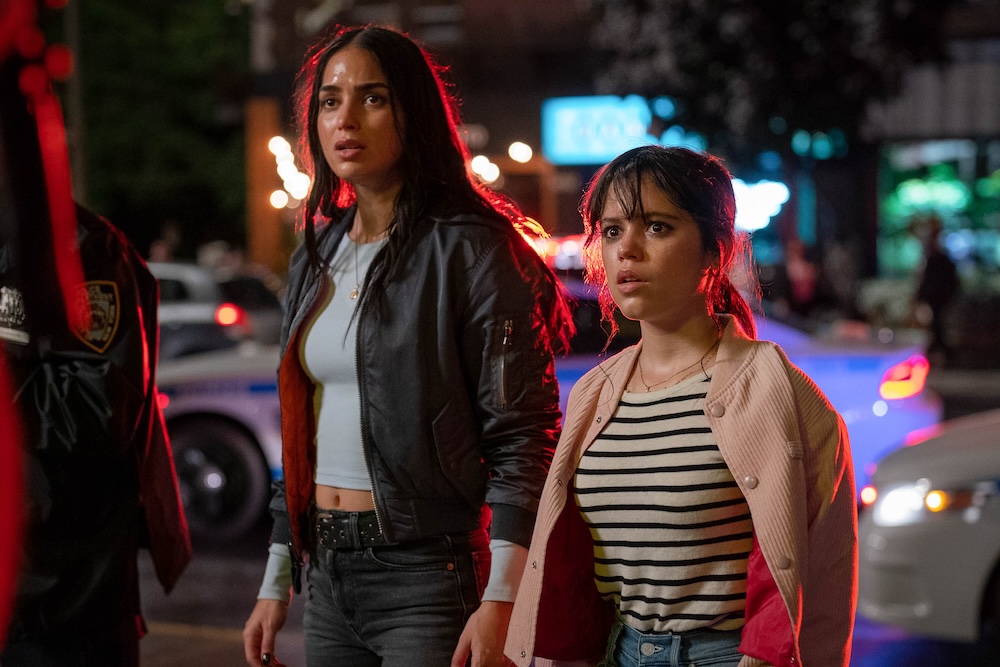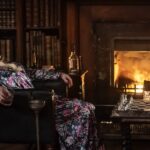
Behind the mask: Scream
Posted on Feb 15, 2024
Brett Jutkiewicz, cinematographer on Scream (2022) and Scream VI (2023), talks blood, gore and reviving Ghostface for a new generation
Words Nicola Foley
Over a quarter of a century has passed since Wes Craven’s first Scream film hit theatres, redefining the slasher movie and leaving an indelible mark with its OTT violence and black comedy bent.
The landscape has transformed since then – contemporary auteurs like Ari Aster, Jordan Peele and Robert Eggers leading the way – but the Scream films have remained classics; widely credited with introducing the kind of self-referential, sly nods and winks to the audience now commonplace in the genre. In the Scream universe, the savvy protagonists are well-versed in the tropes and rules of engagement, playfully hacking away at the fourth wall with a glinting eight-inch hunting knife.
After the original trilogy’s masterclass in meta-horror, all was quiet in Woodsboro until 2011, when Scream 4 was released to mixed reviews. Then came Scream (2022), a barnstorming ‘requel’ that reunites original cast members Neve Campbell, David Arquette and Courteney Cox, while introducing new faces including Wednesday’s Jenna Ortega.
Brett Jutkiewicz (Stranger Things S4) picked up the cinematography mantle, thanks to an existing relationship with directors Matt Bettinelli-Olpin and Tyler Gillett, who he’d collaborated with on 2019 horror-comedy Ready or Not.
“I’m not sure why they hired me,” he laughs, “but they obviously saw something in my work which applied to what they were doing.” Jutkiewicz, who had relished the scares doled out by the original films as a teen, was passed the new script by his agent and loved it. “I had so much fun reading it. I’m a big fan of dark comedy – which it had a lot of – in addition to the horror elements,” he recalls. “It was a bit daunting going into a franchise like that, but I felt more confident because I’d worked with the directors previously. I trusted them and knew they would do a great job, but there were certainly big shoes to fill.”
A NEW VISUAL LANGUAGE
He allowed himself just one watch of the previous Scream movies to familiarise himself with the story and characters – then set about focusing on the new plot and how best to bring it to life. One element of the originals both Jutkiewicz and the directors loved was how effectively they build tension – all the more impressive in scenes that, uniquely for a horror picture, often take place in daylight or well-lit spaces.
“The great thing about those films is the blocking and camera movement, especially in the first Scream,” enthuses Jutkiewicz. “It looks great, but it’s not dark and scary in the way we often imagine horror being. That’s a testament to the direction and camera work making it feel tense and suspenseful without it being visually dark; that was definitely something I wanted to take forward.”
Scream (2022) was the first to be shot digitally, using an ARRI ALEXA Mini and continuing the series’ preference for anamorphic lenses. Panavision G Series optics were selected, with the manufacturer detuning the lenses slightly to lend a more vintage and expressive look.
“We decided that using the anamorphics was a nice way to visually continue that aesthetic into the new film. It’s fairly subtle; most people wouldn’t know or care, but it was right for what we were doing and our story. It connected us to the originals,” explains Jutkiewicz.
When it came to Scream VI, the setting relocated from sleepy Woodsboro to the hustle and bustle of New York City (or more often Montreal standing in for the Big Apple), and the visual language evolved accordingly, including a shift to spherical lenses for the first time. “We felt like it was time to look at the next film with open eyes and make decisions from scratch. We used the ALEXA Mini again but switched to Cooke 5/i prime lenses. The directors had loved the Panavision anamorphics and were keen to use them again, but I felt the setting was so different than what had come before that it would be interesting to try different lenses.
“I love anamorphic lenses, but they look like a movie. They render things so beautifully but it’s a different way to how we perceive it; there’s a level of artifice. Spherical lenses are truer to how your eye sees it. They don’t have as many of those aberrations the anamorphics have. I felt the spherical lenses put you into the space and worked well for the grittier, urban environment.”
GHOST TRAIN
A memorable set piece in Scream VI shows Ghostface stalking his victims in a subway car packed with costumed Halloween revellers. Presenting so many logistical challenges that it almost had to be cut completely, this sequence hogged focus in the prep stages, causing plenty of head scratching over how to recreate an authentic-looking, moving subway train from their principal photography location in Canada.
“We talked about LED screens, we even discussed shipping in a subway car and putting it on a stage – both of which were way too expensive. Plus, the Montreal metro system doesn’t look anything like the New York subway, so that was off the table,” Jutkiewicz shares. Eventually, they tasked the art department with recreating the train and platform from scratch, which had the benefit of allowing them to build their lighting into the car.
“I’m from New York originally and that lighting had to feel right,” insists Jutkiewicz. “All of the lighting inside the car was installed by my amazing team in Montreal and controlled by a dimmer board so it could flicker on cue: I could watch the action and use my walkietalkie to signal exactly when the lights come on and for how long – just an amazing level of control to have.
“And then for the movement – outside the windows – we have three 80ft rows of lights on each side of the car, one above the other, and they were all programmed to move independently, so it looks like the lights are chasing from one end to the other. This gives the impression you’re moving, but it’s just the lights that are moving past the windows by turning off and on in sequence,” he continues. “It was a complex set, but relatively simple solution to the problem.”
CAPTURING A KILLER
Audiences are by now well acquainted with the iconic Ghostface mask which the killer (or killers!) in each film don – a warped, Edvard Munch-inspired visage which original designer Brigitte Sleiertin-Linden describes as bearing a ‘horrible, sorry and frantic look’. The challenge for Jutkiewicz was making sure that Ghostface lost none of his shock value over 25 years on. “We always wanted to pay attention to how the mask looked. In Scream VI, it actually changed for the first time,” he shares. “It wasn’t as pure white as previous iterations, and we added more texture and made it a little darker. It was fun to play around with – we did some testing and prep to see what angles made the mask look scarier.
“I found that off-axis looks pretty nice with this mask; lighting from below, giving it a sinister look and picking up some of the new details. Ultimately, we wanted it to be a presence and look scary. It helps that it’s white – in dark environments, it still pops.”
Another top priority was making sure that the blood – of which there’s plenty – looked real. Jutkiewicz credits the special effects makeup team with devising a realistic-looking formula, and has some words of wisdom for any other aspiring horror filmmakers: “The one thing I’ll say in terms of advice when shooting blood is that you firstly need a great mixture, but know that it does require a bit of special lighting attention.
“It’s generally dark and red – and horror movies are often pretty dark to begin with – so it needs a bit of finesse. Get a little light, usually a harder light source, off-axis to the camera to give it a little bit of shine, otherwise you’ll find it will blend in, especially if the wardrobe is darker too.”
When it came to camera movement, Jutkiewicz revelled in a creeping, voyeuristic quality. “You never really know where Ghostface is, or what corner he might be around. We found that using longer lenses and journeying through foreground elements helped convey that effectively.
“For the action sequences, we went handheld quite a bit and were right in the actors’ faces, which gives a visceral immediacy. In Scream VI, as Ghostface becomes more brazen, we wanted to move with him. The stunt performer playing him had this amazing physicality, so having my operators be able to respond to him and stay in the action heightened the aggressive feel.”
As the franchise gears up for its seventh outing, Jutkiewicz is shifting his focus to shooting the next series of Stranger Things, and at the time of writing, has no plans to return to Scream. Like many other horror fans though, he’s excited to see what comes next for Ghostface and the gang.
“I’ve loved being part of the films and I think it’s just great that the franchise is continuing,” he concludes.
This article appears in our February issue. Read the full magazine here.










